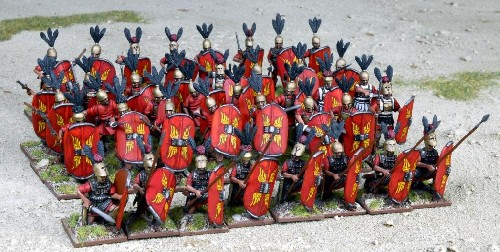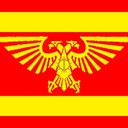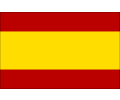A alguien le suena esto??
Partial List of Features:
· 3D and 2D map based user interface.
· Units are individual, section, or platoon/battery sized units.
· Click on the 3D map to issue unit movement waypoints.
· Multiple players over LAN and Internet, each controlling specific forces. Solo sin IA.
· Real time with 30 second time steps, time compression adjustable up to x1,000.
· Detailed combat results, movement, and visibility/LOS models.
· Positional sound effects (movement, weapons, etc.) and TTS speech reports.
· IR sights (2G FLIR, NVD, etc.), surface search and air search radar, smoke, and illumination modeling.
· Laser designation and targeting.
· Combat command and control with player avatar settings and unit radio range limitations.
· Aviation units return to off-map "replenish" and "hold" areas between missions over map.
· 3D terrain height maps with 100m grid squares. Maps are from digital terrain elevation data.
· Ammunition and fuel resupply are modeled however this is rarely used given the time and scale of typical scenarios.
Battle Command game features allow the modeling of important combat engineering capabilities and have an implementation that is divided into several major groupings:
1. EARTHMOVING - Capable units can perform functions such as assisting other units improve positions, excavating dismount fighting positions, excavating hull or turret defilade positions for AFVs, digging anti-tank ditches, filling-in previously or enemy dug positions or anti-tank ditches, removing obstacles, and removing rubble. Specific vehicles and units have tonnage earthmoving capacities per hour, and earthmoving tasks have specific, constant soil tonnage requirements.
2. DEMOLITION - Normally dismount combat engineer platoons carry demolition charges with their vehicles which can be used to accomplish massively destructive tasks from extremely close range. Grid-squares (100m x 100m) can be reduced to smoking craters (along with eliminating any units previously occupying the grid-square), which will also prevent vehicle movement through the area. Specific units, including bridges, obstacles, fortifications, and minefields can be targeted for demolition. Also, abatises (interlocking rows of felled trees) can be relatively quickly blown down in forested grid-squares. Based on the unit capability, a certain amount of time will be required to emplace the explosives and then final detonation can be optionally held off until the user selects the "Authorize Detonation" checkbox.
3. OBSTACLES - Obstacles such as concertina wire, hedgehogs, and triangles can be unloaded from transport vehicles and emplaced by capable units (normally dismounted engineers). Later, the same obstacles can be reloaded, transported to another location, and reused. However, a substantial amount of time and effort may be required, for example, to emplace and remove several kilometers of triple-strand/triple line concertina wire. Decisions on how to employ available engineer capacity will affect battle performance, since combat engineering takes on important meaning for survivability, mobility, and counter-mobility in the game. Obstacles can also be optionally destroyed by capable units--normally through the use of special demolitions, or vehicular repositioning.
4. MINEFIELDS - Capable units emplace, load, and destroy minefield counters. Minefield counters normally cover an area 100m x 100m and comprise approximately 50 anti-tank, anti-personnel, or mixed type minefields. Based on the vehicle or troop dimensions and quantity of vehicles or troops moving through a minefield, there is a probability a vehicle or troop will be in enough proximity to a mine to detonate it. Foot units unload groups of mines from transport and emplace the field under work-time constraints. Volcano units can automatically emplace an entire Volcano minefield (almost 900 AT+AP mines) almost as fast as they can drive or fly. Such a minefield can cover a linear distance of almost 2 kilometers. Artillery can fire FASCAM minefields into target coordinates very quickly. Certain types of minefields can be reclaimed, reloaded into transport, and reused at a later time. Specific types of mines, such as Volcano and MOPMS, have optional self-destruct time choices. For example, Volcano minefields at time of emplacement, can have one of three self-destruct time options chosen: 4, 48, or 360 (15 days) hours. The self-destruct date and time chosen is displayed on the counter.
5. BRIDGING - Units can emplace, load, and destroy bridging. An AVLB bridge can be dropped over an anti-tank ditch, road crater, or blown bridge for example. Bailey and Medium Girder Bridges can be built out of 100m segments to cross large gaps. Ribbon and other floating bridges can use segments as temporary ferries, or the segments can be assembled into a continuous crossing bridge. Naturally, bridges and segments of bridges can be torn down, reloaded, and transported for subsequent usage.
Below is the "Combat Engineering Control Window". From this window (which is launched from a main Unit Information window), users can view unit combat engineering capabilities, set related orders, and evaluate continuing task progress. The window is divided along the major task areas outlined above. Unit combat engineering capabilities are normally specified in kilogram per hour of work per strength of the unit (units sustaining casualties will have less per hour work capability).





Creado por:
Historical Software Corporation Military Advisor
Major Carl W. Schwamberger, USMCR (Retired).
- United States Marine Corps, 1974-96.
- Field Artillery Officers Basic Course.
- 12th Marines.
- 14th Marines.
- Technical Advisor for Artillery.
- Wargaming Expert.











